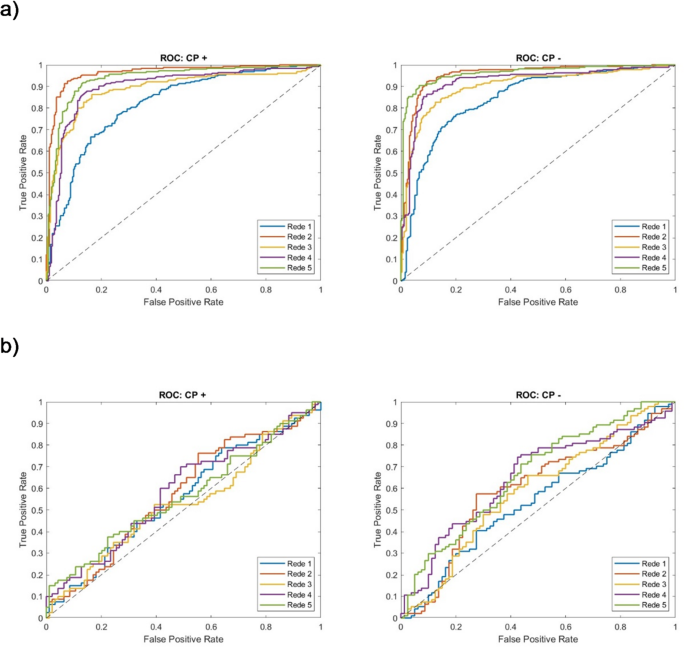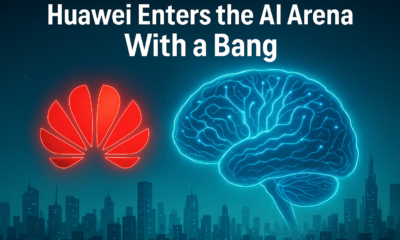AI Research
Stock Research AI and AI Stocks: How Artificial Intelligence is Changing Investing

Artificial intelligence is transforming nearly every industry, and the world of investing is no exception. As investors look for smarter, faster ways to analyze companies and find opportunities, stock research AI has emerged as a powerful solution. At the same time, AI stocks themselves—companies that develop or deploy artificial intelligence are attracting significant investor attention.
But what exactly is stock research AI, and why are AI stocks considered some of the most promising investments of the decade? This article explores how AI-driven research tools are revolutionizing investment strategies and why companies leveraging artificial intelligence are reshaping global markets.
What Is Stock Research AI?
Stock research AI refers to using machine learning algorithms and big data analytics to evaluate financial markets, analyze companies, and identify trading opportunities. Unlike traditional research methods, which rely on human analysts manually reviewing reports and data, AI systems can:
Process massive datasets within seconds
Recognize complex patterns invisible to the human eye
Continuously learn and improve prediction accuracy
How Stock Research AI Works
Modern AI research platforms combine several techniques:
Natural Language Processing (NLP): To read and understand earnings calls, news articles, and social media sentiment.
Predictive Modeling: To forecast future price movements using historical data and real-time indicators.
Data Visualization: To present complex insights through dashboards and interactive charts.
By automating the time-consuming parts of research, AI empowers investors to make better decisions faster.
The Rise of AI Stocks
While AI helps investors analyze the market, many are also interested in AI stocks themselves companies that build AI technologies or rely heavily on artificial intelligence to run their operations.
Why Are AI Stocks Gaining Popularity?
There are several reasons why AI stocks have become a focus area for investors:
✅ Massive Growth Potential: AI is expected to add trillions of dollars to the global economy over the next 10–15 years.
✅ Industry Transformation: From healthcare to finance and retail, nearly every sector is integrating AI for automation, prediction, and optimization.
✅ Innovation Leadership: Companies investing heavily in AI often outpace their competitors in profitability and market share.
✅ Demand for Efficiency: Businesses want faster, more accurate decision-making, driving demand for AI solutions.
Top Examples of AI Stocks
Some of the most well-known AI stocks include:
NVIDIA (NVDA): Powers AI workloads with advanced GPUs.
Alphabet (GOOGL): Parent of Google, a leader in AI research and applications.
Microsoft (MSFT): Integrating AI into cloud services, productivity software, and developer tools.
Palantir Technologies (PLTR): Provides AI-driven analytics platforms for government and commercial clients.
C3.ai (AI): Specializes in enterprise AI applications.
These companies have seen significant investor interest due to their focus on innovation and long-term growth.
How Investors Use Stock Research AI to Evaluate AI Stocks
Combining stock research AI with investments in AI stocks creates a powerful synergy. Here’s how it works:
1. Faster Trend Identification
AI tools scan news, earnings calls, and sentiment data to spot early signals of growth or risk in AI-focused companies.
2. Enhanced Risk Assessment
Predictive models can quantify the impact of market shifts, regulatory changes, or competitive threats on AI stocks.
3. Smarter Timing Decisions
By analyzing historical price action and real-time momentum, AI helps pinpoint better entry and exit points.
Benefits of Using AI in Stock Research
Stock research AI offers many advantages over traditional methods:
Speed: Analyze thousands of data points in seconds.
Objectivity: Reduce emotional bias in investment decisions.
Adaptability: Continuously improve models as new data becomes available.
Scalability: Monitor many stocks simultaneously without additional effort.
These benefits make AI tools especially valuable for investors managing diversified portfolios or trading frequently.
Challenges and Risks to Consider
While AI tools and AI stocks are exciting, they also come with challenges:
Overfitting: Predictive models can sometimes “learn” noise rather than genuine patterns.
Data Quality: Incomplete or biased data can lead to inaccurate predictions.
Valuation Concerns: Some AI stocks trade at very high multiples, increasing downside risk during market corrections.
For this reason, investors should use AI as a tool not a substitute for their own judgment and due diligence.
Tips for Investing in AI Stocks Using Stock Research AI
Here are some best practices to keep in mind:
✅ Do Your Homework: Understand what each AI stock actually does and how it makes money.
✅ Use Trusted Tools: Choose reputable AI platforms with transparent methodologies.
✅ Stay Diversified: Don’t put all your capital into a single AI stock or sector.
✅ Monitor Regularly: Markets change quickly—review your positions often.
✅ Keep Learning: AI itself is evolving. Staying informed is crucial for long-term success.
Conclusion: The Future of Investing with AI
Artificial intelligence is reshaping how we research stocks and where we invest. Whether you are using stock research AI to improve your strategy or buying AI stocks to benefit from industry growth, embracing technology is no longer optional—it’s essential.
As AI continues to mature, the tools available to investors will become even more powerful. The key is to combine data-driven insights with sound judgment and a clear investment plan.
AI Research
Bublik reacts on social media after losing to Sinner: “It’s Artificial Intelligence”
🎾 Atharva Sharma vs Alexander Klintcharov
- Sign up with Bet365 here
- Make your first deposit of at least €5
- Go to the “Live” section and watch every match
Watch the match on Bet365
A few minutes after losing to Jannik Sinner at the US Open 2025 with a convincing score against him, Alexander Bublik reacted on social media to the incredible performance of the world number one. The Kazakh player commented on a picture with the result: “AI,” once again referring to the Italian as Artificial Intelligence, always as a compliment to his amazing level on the court.
And post-match he was very quick to insist on his point. https://t.co/qjuPPcHxif pic.twitter.com/7B1rhCUWUH
— José Morgado (@josemorgado) September 2, 2025
This news is an automatic translation. You can read the original news, Bublik reacciona en redes sociales tras perder contra Sinner: “Es Inteligencia Artificial”
AI Research
Indonesia unveils national AI roadmap
Artificial Intelligence (AI) could help Indonesia achieve its vision of Golden Indonesia 2045 with the right strategy and governance, according to Minister of Communication and Digital Affairs, Meutya Hafid.
Stating this in her forward to Indonesia’s National AI Roadmap White Paper, she said the AI roadmap would provide policy direction to accelerate AI ecosystem development to ensure the country was not to be left behind in a field increasingly dominated by advanced countries and global tech giants.
The White Paper, drafted by the AI Roadmap Task Force, a 443-member body representing government, academia, industry, civil society, and the media, was launched by the Ministry of Communication and Digital in early August.
It has been envisaged as a strategic document that would serve as the country’s reference for adopting and developing AI technology in a more focused, inclusive, and ethical manner. The document has been circulated for public consultation to gather wider input from stakeholders.
This initiative builds on the National AI Strategy 2020-2045, which was an initial framework developed by the Collaborative Research and Industrial Innovation in AI (KORIKA), an organisation formed by scientists, technocrats and industry leaders to accelerate the AI ecosystem in Indonesia.
However, that strategy has struggled to keep up with the rapid breakthroughs in generative AI (GenAI) since late 2022.
Three major action plans
The national AI roadmap outlines three main action plans: AI ecosystems, AI development priorities, and AI financing – all anchored in ethical guidance and regulation.
This roadmap also breaks down the action plan into three-time horizons: short term (2025-2027), medium term (2028-2035) and long term (2035-2045).
To subscribe to the GovInsider bulletin, click here.
-1756728192656.jpg)
Indonesia’s AI ecosystem development would focus on three main pillars.
The first pillar was talent development.
Indonesia aimed to nurture a large pool of skilled professionals who could both use and create AI innovation.
The roadmap sets an ambitious target of producing 100,000 AI talents annually. Around 30 per cent would be developers, divided further into AI specialists (30 per cent) and practitioners (70 per cent), and the remaining 70 per cent would be AI end-users.
The government also aimed to ensure 20 million citizens are AI-literate by 2029.
The next pillar was research and industrial innovation.
The roadmap emphasised advanced, relevant, and sustainable AI research that delivered real benefits to society.
To achieve this, the government would encourage agencies, universities, and industries to strengthen AI programmes in priority sectors.
A cross-sectoral open sandbox platform would also be developed to support experimentation and collaboration.
The last pillar in Indonesia’s AI ecosystem was infrastructure and data.
To foster domestic AI innovation, the government planned to expand digital infrastructure, including high-performance computing, GPUs/TPUs, and a national cloud hosted in sovereign data centres to ensure secure and regulated data management.
The white paper also outlined plans to promote the development of green data centres through public–private partnerships.
Strategic priorities in AI development
The roadmap focuses on developing AI for strategic use cases, ensuring that AI adoption delivers meaningful and sustainable impact.
These priorities closely align with the country’s national development agenda and President Prabowo’s Asta Cita vision.
The priority sectors for AI include food security, healthcare, education, economy and finance, bureaucratic reform, politics and security, energy, environment, housing, transport and logistics, as well as arts, culture, and the creative economy.
Public services were also identified as an immediate priority for the 2025–2027 term. In healthcare, AI would be applied for early disease detection, remote patient monitoring, and optimising the distribution of medicines and vaccines.
In education, the focus would be on adaptive learning and digital platforms for personalised teaching materials. The government also plans to develop automated evaluation systems to ease assessment processes in schools.
In governance, AI applications would centre on intelligent chatbots for public services and data-driven policy analytics.
For transport and mobility, development would be directed towards smart traffic systems, public transport management, and the optimisation of national logistics.
Financing the national AI agenda
The roadmap outlined a phased financing strategy, combining state budget allocations, private sector contributions, and external partnerships through bilateral and multilateral collaborations.
Over the next two decades, the government aimed to establish a sustainable financing ecosystem driven by industry participation and international investment. To achieve this, Indonesia will expand fiscal incentives to encourage AI-related investments.
A notable feature of the roadmap was the role of Danantara, Indonesia’s newly established sovereign wealth fund, which has been tasked with spearheading AI financing.
Danantara would design innovative financial instruments, establish a Sovereign AI Fund, and develop blended financing models for the country’s strategic AI projects.
In the initial phase, financing would target fundamental research, pilot projects in the public sector, and the development of data and computing infrastructure.
Subsequent stages would extend funding to industries, research institutions, universities, and domestic AI start-ups, with the goal of strengthening Indonesia’s AI ecosystem and boosting its global competitiveness.
AI Research
MAIA platform for routine clinical testing: an artificial intelligence embryo selection tool developed to assist embryologists

Graham, M. E. et al. Assisted reproductive technology: Short- and long-term outcomes. Dev. Med. Child. Neurol. 65, 38–49 (2023).
Jiang, V. S. & Bormann, C. L. Artificial intelligence in the in vitro fertilization laboratory: a review of advancements over the last decade. Fertil. Steril. 120, 17–23 (2023).
Devine, K. et al. Single vitrified blastocyst transfer maximizes liveborn children per embryo while minimizing preterm birth. Fertil. Steril. 103, 1454–1460 (2015).
Tiitinen, A. Single embryo transfer: why and how to identify the embryo with the best developmental potential. Best Pract. Res. Clin. Endocrinol. Metab. 33, 77–88 (2019).
Glatstein, I., Chavez-Badiola, A. & Curchoe, C. L. New frontiers in embryo selection. J. Assist. Reprod. Genet. 40, 223–234 (2023).
Gardner, D. K. & Schoolcraft, W. B. Culture and transfer of human blastocysts. Curr. Opin. Obstet. Gynaecol. 11, 307–311 (1999).
Sciorio, R. & Meseguer, M. Focus on time-lapse analysis: blastocyst collapse and morphometric assessment as new features of embryo viability. Reprod. BioMed. Online. 43, 821–832 (2021).
Sundvall, L., Ingerslev, H. J., Knudsen, U. B. & Kirkegaard, K. Inter- and intra-observer variability of time-lapse annotations. Hum. Reprod. 28, 3215–3221 (2013).
Gallego, R. D., Remohí, J. & Meseguer, M. Time-lapse imaging: the state of the Art. Biol. Reprod. 101, 1146–1154 (2019).
VerMilyea, M. D. et al. Computer-automated time-lapse analysis results correlate with embryo implantation and clinical pregnancy: a blinded, multi-centre study. Reprod. Biomed. Online. 29, 729–736 (2014).
Chéles, D. S., Molin, E. A. D., Rocha, J. C. & Nogueira, M. F. G. Mining of variables from embryo morphokinetics, blastocyst’s morphology and patient parameters: an approach to predict the live birth in the assisted reproduction service. JBRA Assist. Reprod. 24, 470–479 (2020).
Rocha, C., Nogueira, M. G., Zaninovic, N. & Hickman, C. Is AI assessment of morphokinetic data and digital image analysis from time-lapse culture predictive of implantation potential of human embryos? Fertil. Steril. 110, e373 (2018).
Zaninovic, N. et al. Application of artificial intelligence technology to increase the efficacy of embryo selection and prediction of live birth using human blastocysts cultured in a time-lapse incubator. Fertil. Steril. 110, e372–e373 (2018).
Alegre, L. et al. First application of artificial neuronal networks for human live birth prediction on Geri time-lapse monitoring system blastocyst images. Fertil. Steril. 114, e140 (2020).
Bori, L. et al. An artificial intelligence model based on the proteomic profile of euploid embryos and blastocyst morphology: a preliminary study. Reprod. BioMed. Online. 42, 340–350 (2021).
Chéles, D. S. et al. An image processing protocol to extract variables predictive of human embryo fitness for assisted reproduction. Appl. Sci. 12, 3531 (2022).
Jacobs, C. K. et al. Embryologists versus artificial intelligence: predicting clinical pregnancy out of a transferred embryo who performs it better? Fertil. Steril. 118, e81–e82 (2022).
Lorenzon, A. et al. P-211 development of an artificial intelligence software with consistent laboratory data from a single IVF center: performance of a new interface to predict clinical pregnancy. Hum. Reprod. 39, deae108.581 (2024).
Fernandez, E. I. et al. Artificial intelligence in the IVF laboratory: overview through the application of different types of algorithms for the classification of reproductive data. J. Assist. Reprod. Genet. 37, 2359–2376 (2020).
Mendizabal-Ruiz, G. et al. Computer software (SiD) assisted real-time single sperm selection associated with fertilization and blastocyst formation. Reprod. BioMed. Online. 45, 703–711 (2022).
Fjeldstad, J. et al. Segmentation of mature human oocytes provides interpretable and improved blastocyst outcome predictions by a machine learning model. Sci. Rep. 14, 10569 (2024).
Khosravi, P. et al. Deep learning enables robust assessment and selection of human blastocysts after in vitro fertilization. NPJ Digit. Med. 2, 21 (2019).
Hickman, C. et al. Inner cell mass surface area automatically detected using Chloe eq™(fairtility), an ai-based embryology support tool, is associated with embryo grading, embryo ranking, ploidy and live birth outcome. Fertil. Steril. 118, e79 (2022).
Tran, D., Cooke, S., Illingworth, P. J. & Gardner, D. K. Deep learning as a predictive tool for fetal heart pregnancy following time-lapse incubation and blastocyst transfer. Hum. Reprod. 34, 1011–1018 (2019).
Rajendran, S. et al. Automatic ploidy prediction and quality assessment of human blastocysts using time-lapse imaging. Nat. Commun. 15, 7756 (2024).
Bormann, C. L. et al. Consistency and objectivity of automated embryo assessments using deep neural networks. Fertil. Steril. 113, 781–787e1 (2020).
Kragh, M. F. & Karstoft, H. Embryo selection with artificial intelligence: how to evaluate and compare methods? J. Assist. Reprod. Genet. 38, 1675–1689 (2021).
Cromack, S. C., Lew, A. M., Bazzetta, S. E., Xu, S. & Walter, J. R. The perception of artificial intelligence and infertility care among patients undergoing fertility treatment. J. Assist. Reprod. Genet. https://doi.org/10.1007/s10815-024-03382-5 (2025).
Fröhlich, H. et al. From hype to reality: data science enabling personalized medicine. BMC Med. 16, 150 (2018).
Zhu, J. et al. External validation of a model for selecting day 3 embryos for transfer based upon deep learning and time-lapse imaging. Reprod. BioMed. Online. 47, 103242 (2023).
Yelke, H. K. et al. O-007 Simplifying the complexity of time-lapse decisions with AI: CHLOE (Fairtility) can automatically annotate morphokinetics and predict blastulation (at 30hpi), pregnancy and ongoing clinical pregnancy. Hum. Reprod. 37, deac104.007 (2022).
Papatheodorou, A. et al. Clinical and practical validation of an end-to-end artificial intelligence (AI)-driven fertility management platform in a real-world clinical setting. Reprod. BioMed. Online. 45, e44–e45 (2022).
Salih, M. et al. Embryo selection through artificial intelligence versus embryologists: a systematic review. Hum. Reprod. Open hoad031 (2023).
Nunes, K. et al. Admixture’s impact on Brazilian population evolution and health. Science. 388(6748), eadl3564 (2025).
Jackson-Bey, T. et al. Systematic review of Racial and ethnic disparities in reproductive endocrinology and infertility: where do we stand today? F&S Reviews. 2, 169–188 (2021).
Kassi, L. A. et al. Body mass index, not race, May be associated with an alteration in early embryo morphokinetics during in vitro fertilization. J. Assist. Reprod. Genet. 38, 3091–3098 (2021).
Pena, S. D. J., Bastos-Rodrigues, L., Pimenta, J. R. & Bydlowski, S. P. DNA tests probe the genomic ancestry of Brazilians. Braz J. Med. Biol. Res. 42, 870–876 (2009).
Fraga, A. M. et al. Establishment of a Brazilian line of human embryonic stem cells in defined medium: implications for cell therapy in an ethnically diverse population. Cell. Transpl. 20, 431–440 (2011).
Amin, F. & Mahmoud, M. Confusion matrix in binary classification problems: a step-by-step tutorial. J. Eng. Res. 6, 0–0 (2022).
Magdi, Y. et al. Effect of embryo selection based morphokinetics on IVF/ICSI outcomes: evidence from a systematic review and meta-analysis of randomized controlled trials. Arch. Gynecol. Obstet. 300, 1479–1490 (2019).
Guo, Y. H., Liu, Y., Qi, L., Song, W. Y. & Jin, H. X. Can time-lapse incubation and monitoring be beneficial to assisted reproduction technology outcomes? A randomized controlled trial using day 3 double embryo transfer. Front. Physiol. 12, 794601 (2022).
Giménez, C., Conversa, L., Murria, L. & Meseguer, M. Time-lapse imaging: morphokinetic analysis of in vitro fertilization outcomes. Fertil. Steril. 120, 228–227 (2023).
Vitrolife EmbryoScope + time-lapse system. (2023). https://www.vitrolife.com/products/time-lapse-systems/embryoscopeplus-time-lapse-system/.
Lagalla, C. et al. A quantitative approach to blastocyst quality evaluation: morphometric analysis and related IVF outcomes. J. Assist. Reprod. Genet. 32, 705–712 (2015).
Rocha, J. C. et al. A method based on artificial intelligence to fully automatize the evaluation of bovine blastocyst images. Sci. Rep. 7, 7659 (2017).
Chavez-Badiola, A. et al. Predicting pregnancy test results after embryo transfer by image feature extraction and analysis using machine learning. Sci. Rep. 10, 4394 (2020).
Matos, F. D., Rocha, J. C. & Nogueira, M. F. G. A method using artificial neural networks to morphologically assess mouse blastocyst quality. J. Anim. Sci. Technol. 56, 15 (2014).
Wang, S., Zhou, C., Zhang, D., Chen, L. & Sun, H. A deep learning framework design for automatic blastocyst evaluation with multifocal images. IEEE Access. 9, 18927–18934 (2021).
Berntsen, J., Rimestad, J., Lassen, J. T., Tran, D. & Kragh, M. F. Robust and generalizable embryo selection based on artificial intelligence and time-lapse image sequences. PLoS One. 17, e0262661 (2022).
Fruchter-Goldmeier, Y. et al. An artificial intelligence algorithm for automated blastocyst morphometric parameters demonstrates a positive association with implantation potential. Sci. Rep. 13, 14617 (2023).
Illingworth, P. J. et al. Deep learning versus manual morphology-based embryo selection in IVF: a randomized, double-blind noninferiority trial. Nat. Med. 30, 3114–3120 (2024).
Kanakasabapathy, M. K. et al. Development and evaluation of inexpensive automated deep learning-based imaging systems for embryology. Lab. Chip. 19, 4139–4145 (2019).
Loewke, K. et al. Characterization of an artificial intelligence model for ranking static images of blastocyst stage embryos. Fertil. Steril. 117, 528–535 (2022).
Hengstschläger, M. Artificial intelligence as a door opener for a new era of human reproduction. Hum. Reprod. Open hoad043 (2023).
Lassen Theilgaard, J., Fly Kragh, M., Rimestad, J., Nygård Johansen, M. & Berntsen, J. Development and validation of deep learning based embryo selection across multiple days of transfer. Sci. Rep. 13 (1), 4235 (2023).
Lozano, M. et al. P-301 Assessment of ongoing clinical outcomes prediction of an AI system on retrospective SET data, Human Reprod. 38(Issue Supplement_1), dead093.659. (2023).
Collins, G. S. et al. TRIPOD + AI statement: updated guidance for reporting clinical prediction models that use regression or machine learning methods. BMJ 385, e078378 (2024).
Abdolrasol, M. G. M. et al. Artificial neural networks based optimization techniques: a review. Electronics 10, 2689 (2021).
Yuzer, E. O. & Bozkurt, A. Instant solar irradiation forecasting for solar power plants using different ANN algorithms and network models. Electr. Eng. 106, 3671–3689 (2024).
Guariso, G. & Sangiorgio, M. Improving the performance of multiobjective genetic algorithms: an elitism-based approach. Information 11, 587 (2020).
García-Pascual, C. M. et al. Optimized NGS approach for detection of aneuploidies and mosaicism in PGT-A and imbalances in PGT-SR. Genes 11, 724 (2020).
-

 Business3 days ago
Business3 days agoThe Guardian view on Trump and the Fed: independence is no substitute for accountability | Editorial
-
Tools & Platforms3 weeks ago
Building Trust in Military AI Starts with Opening the Black Box – War on the Rocks
-

 Ethics & Policy1 month ago
Ethics & Policy1 month agoSDAIA Supports Saudi Arabia’s Leadership in Shaping Global AI Ethics, Policy, and Research – وكالة الأنباء السعودية
-

 Events & Conferences3 months ago
Events & Conferences3 months agoJourney to 1000 models: Scaling Instagram’s recommendation system
-

 Jobs & Careers2 months ago
Jobs & Careers2 months agoMumbai-based Perplexity Alternative Has 60k+ Users Without Funding
-

 Funding & Business2 months ago
Funding & Business2 months agoKayak and Expedia race to build AI travel agents that turn social posts into itineraries
-

 Education2 months ago
Education2 months agoVEX Robotics launches AI-powered classroom robotics system
-

 Podcasts & Talks2 months ago
Podcasts & Talks2 months agoHappy 4th of July! 🎆 Made with Veo 3 in Gemini
-

 Podcasts & Talks2 months ago
Podcasts & Talks2 months agoOpenAI 🤝 @teamganassi
-

 Mergers & Acquisitions2 months ago
Mergers & Acquisitions2 months agoDonald Trump suggests US government review subsidies to Elon Musk’s companies




















